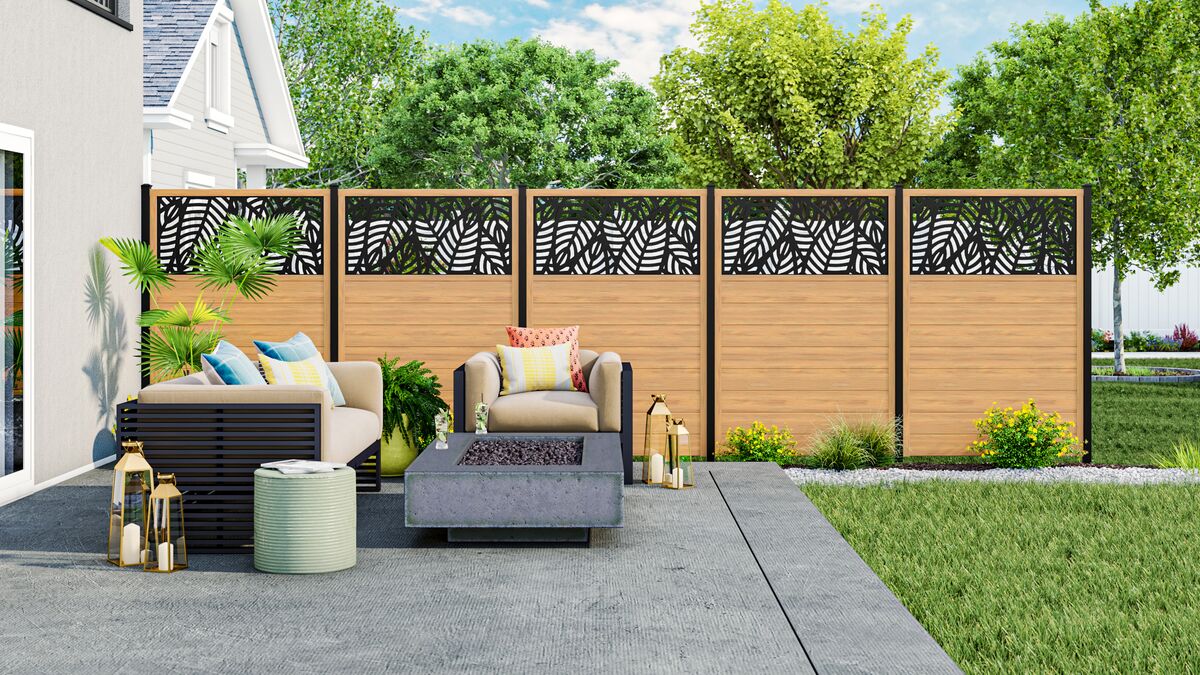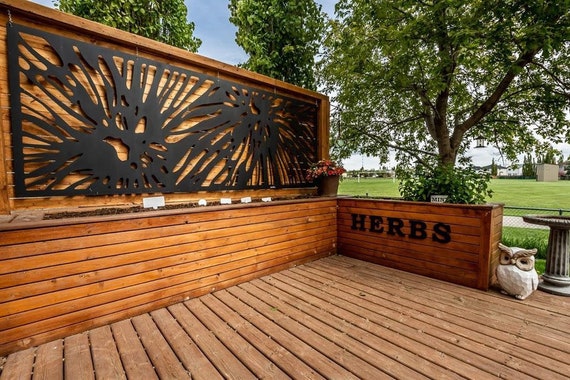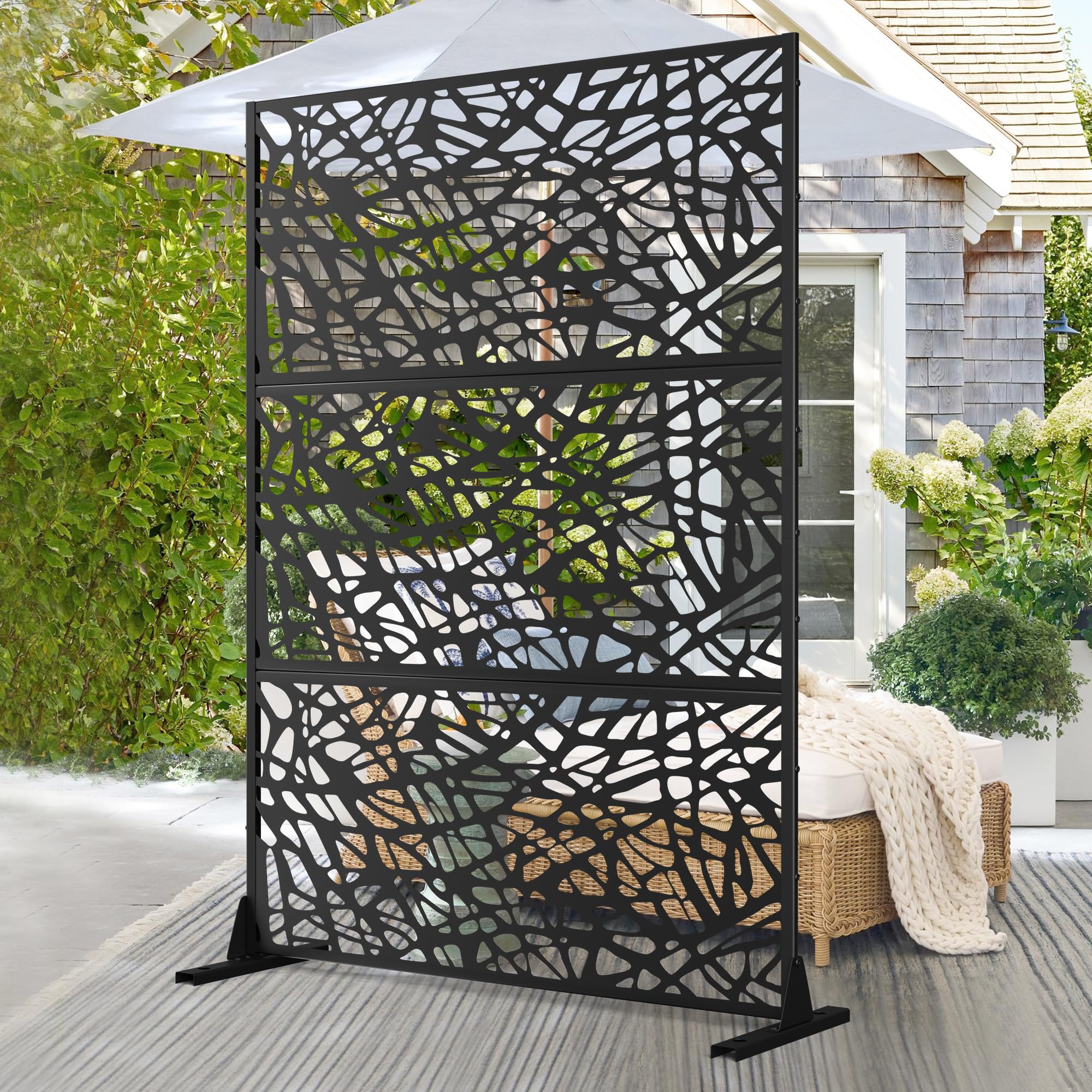When you think of privacy in your home or garden, what comes to mind? Perhaps a tall fence or a thick hedge? While these options can serve the purpose, they often lack aesthetic appeal. Decorative privacy panels are an excellent solution for those who desire both functionality and style. In this comprehensive guide, I will walk you through everything you need to know about decorative privacy panels, blending my personal experiences and professional insights.
What is a Decorative Privacy Panel?
Decorative privacy panels are versatile structures designed to provide seclusion while enhancing the beauty of a space. Made from various materials such as wood, metal, and plastic, they can be used for outdoor and indoor settings.
Benefits of Decorative Privacy Panels
- Enhanced Privacy: They effectively block unwanted views without completely isolating your space.
- Improved Aesthetics: Available in numerous designs, they can complement your existing decor.
- Noise Reduction: Some panels can help reduce ambient noise, making your area more serene.
- Easy Installation: Many panels are easy to install, allowing for quick transformations.
- Versatility: Perfect for gardens, patios, balconies, and even indoor spaces.
Types of Decorative Privacy Panels
1. Wooden Privacy Panels
Wooden panels offer a classic, natural look. They can be stained or painted to match your decor. Personally, I opted for cedar panels for my backyard because they are both durable and beautiful.
2. Metal Privacy Panels
Metal panels are modern and sleek, often featuring intricate designs. They are highly durable and require minimal maintenance. I installed a few aluminum panels that served as a striking backdrop while providing privacy.
3. Vinyl Privacy Panels
Vinyl panels are lightweight, durable, and resistant to fading and corrosion. They come in various styles, including faux wood grains that look quite realistic.
Comparative Overview of Decorative Privacy Panels
| Type | Material | Durability | Maintenance | Cost |
|---|---|---|---|---|
| Wooden Panels | Cedar, Pine, Redwood | Moderate | High (requires regular staining/painting) | Medium |
| Metal Panels | Aluminum, Steel | High | Low (minimal upkeep) | High |
| Vinyl Panels | Vinyl | High | Very Low (wash with soap and water) | Medium |

Choosing the Right Decorative Privacy Panel
Factors to Consider
When selecting a privacy panel, it’s essential to consider various factors, including:
- Purpose: Is it for decoration, privacy, or to block noise?
- Style: Ensure it complements your home or garden design.
- Material: Consider durability and maintenance.
- Height: How much privacy do you need?
- Budget: Determine how much you’re willing to spend.
Installation Tips for Decorative Privacy Panels
Preparing For Installation
Before beginning the installation, ensure you have all the necessary tools and materials. A level, measuring tape, and some basic hardware will generally suffice.

Installation Steps
- Determine the placement and mark the outline.
- Prepare the ground by clearing any debris.
- Install any posts, if required, for stability.
- Attach the panels securely.
- Finish by adding any decorative elements or plants around the panel.
Pros and Cons of Decorative Privacy Panels
Pros
- Enhances privacy while allowing airflow.
- Available in various designs to match any decor.
- Can be used for a range of purposes (decoration, garden fencing, etc.).
- Relatively easy to install for DIY enthusiasts.

Cons
- Some materials may require regular maintenance.
- Cost can vary significantly based on material and design.
- Installation may require a permit in certain areas.
Real-Life Applications of Decorative Privacy Panels
In my personal experience, decorative privacy panels can completely transform a space. For instance, I installed a wooden privacy panel around my garden seating area, creating a cozy nook that feels both secluded and inviting. Similarly, my neighbor chose metal panels adorned with laser-cut designs, making their backyard a beautiful retreat.

Decorative Privacy Panels for Indoor Spaces
While most discussions focus on outdoor uses, decorative privacy panels can also enhance indoor areas. They can act as room dividers, blocking off an office nook or creating a separate dining area in an open floor plan.
Examples of Indoor Uses
- Home offices that require a quiet space.
- Kids’ play areas that need to be separated from living spaces.
- Decorative backdrops for events or photos.

FAQs about Decorative Privacy Panels
What materials are best for decorative privacy panels?
The best materials depend on your needs and preferences. Wood offers a natural look, metal adds modern flair, while vinyl is low-maintenance.
How tall should a privacy panel be?
A standard height is between 4 to 6 feet. However, this may vary based on local regulations and your specific needs.

Can I install decorative privacy panels myself?
Yes! Many decorative privacy panels are designed for easy installation, especially if you’re handy with basic tools.
Are decorative privacy panels weather-resistant?
Most materials like metal and vinyl are weather-resistant. Wood may need treatments to withstand the elements.
How do I maintain decorative privacy panels?
Maintenance varies by material. Wood may require staining or painting, while vinyl or metal panels can often be cleaned with a simple soap and water solution.
Conclusion
Decorative privacy panels are a brilliant addition to any space seeking a mix of functionality and beauty. With numerous types and designs to choose from, they can meet a variety of needs while enhancing the overall aesthetics of your area. Whether you’re looking to create a serene garden retreat or a stylish indoor workspace, incorporating decorative privacy panels can make all the difference.
So, are you ready to transform your space? Don’t hesitate to share your experiences with decorative privacy panels in the comments below!